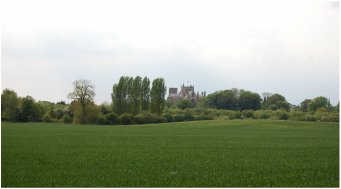Hadrian's Wall © Brian Buchanan
About the project
The burial record for this era provides the richest evidence relevant to the study of migrations, identity and the reshaping of political structures. Artefacts & Cemeteries

Artefact assemblages in early medieval graves provide insights into wealth, status, kin and family groups. Cemetery size and organisation, and grave form are equally valuable evidence for understanding communities.
populations, mobility & healthNew bioarchaeological methods allow assessment of health, welfare, diet and mobility. What do their skeletal remains reveal about the people of Northumbria?
people, space & placeRivers, routes, and landscape features influenced burial activity and especially high status funerary events. Where were the dead buried and how did this help to define territories?
|
People and Place will build on previous advances in early medieval cemetery studies by applying an aggregate of social and scientific approaches to the burial record for the kingdom of Northumbria AD 300-800. It will undertake a full reassessment of all known funerary evidence of early medieval date from the Humber to the Firth of Forth and from the North to Irish Seas.
Northumbria encapsulates the tensions and questions posed by burial and documentary datasets in terms of migrations, ethnicities, early polities and heartlands. |


